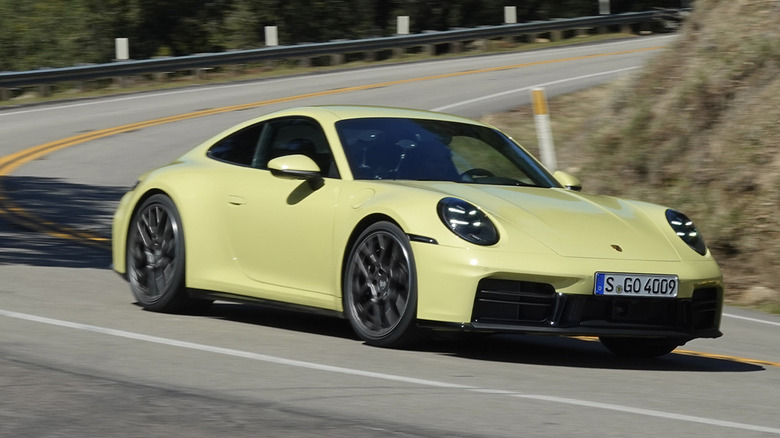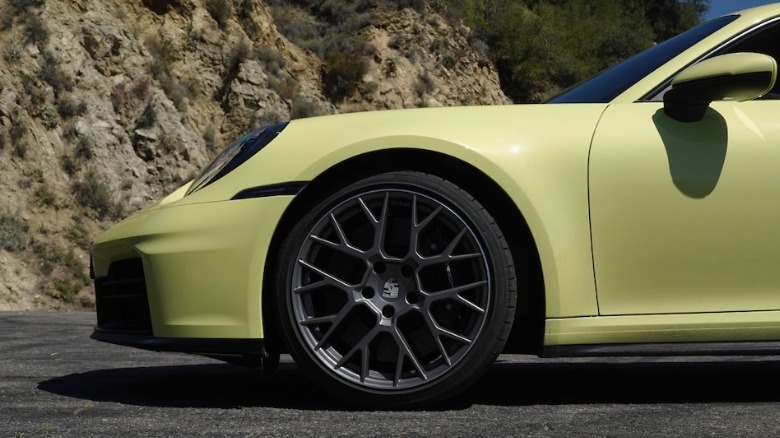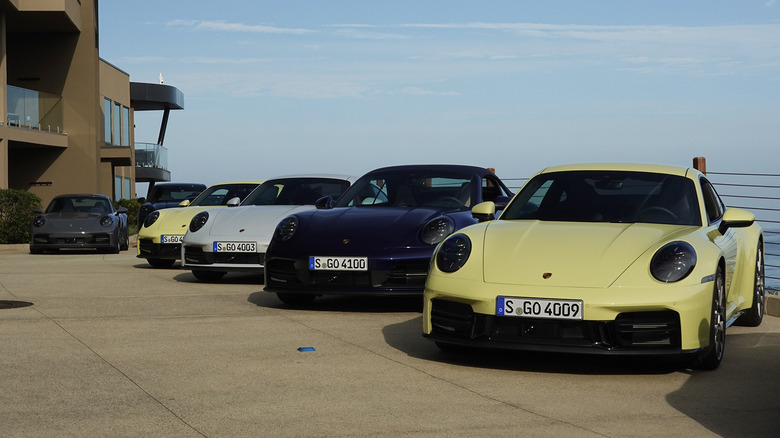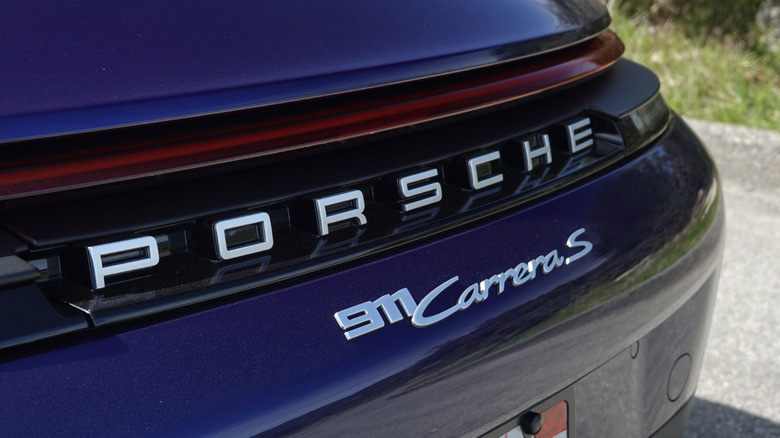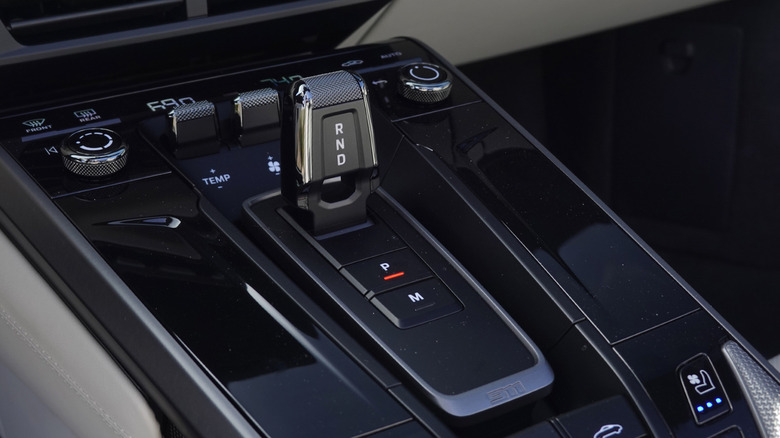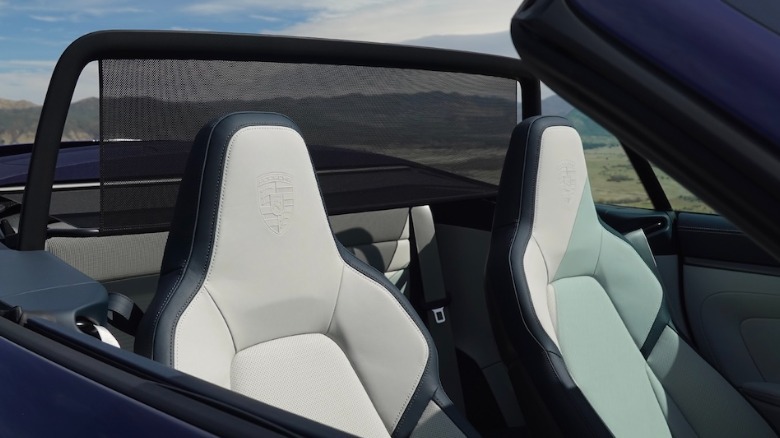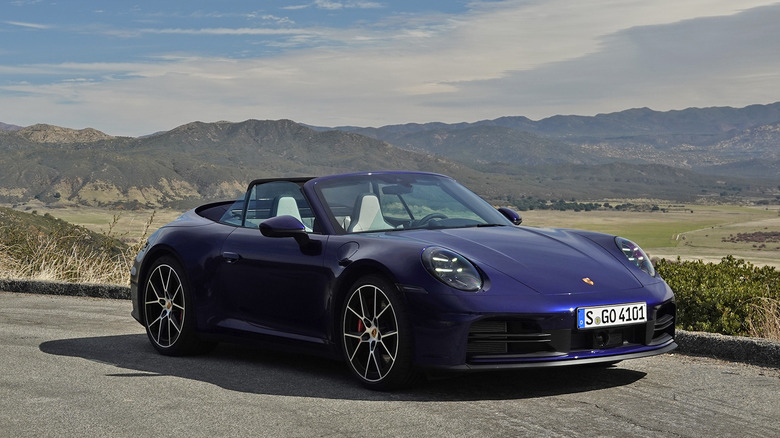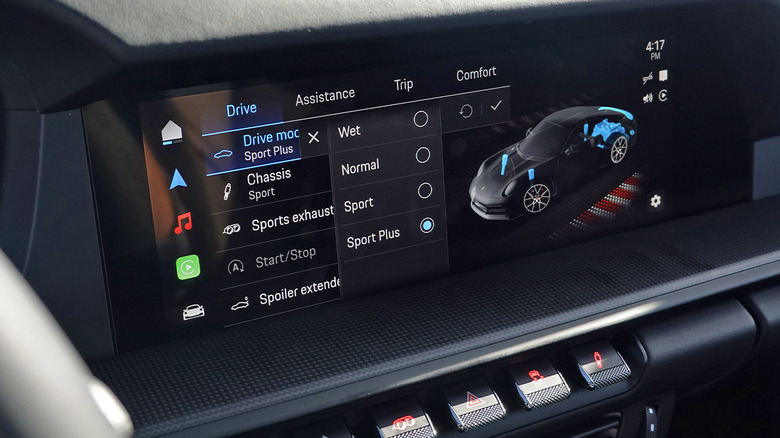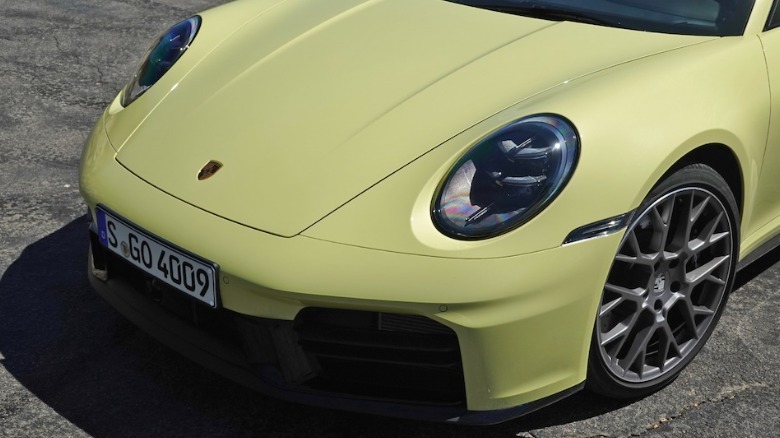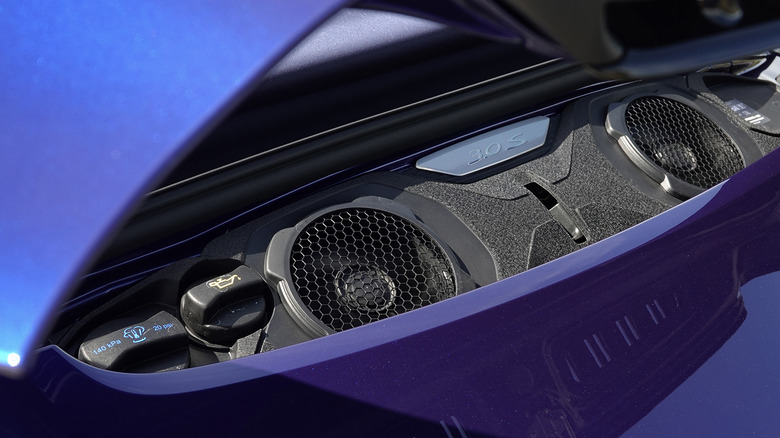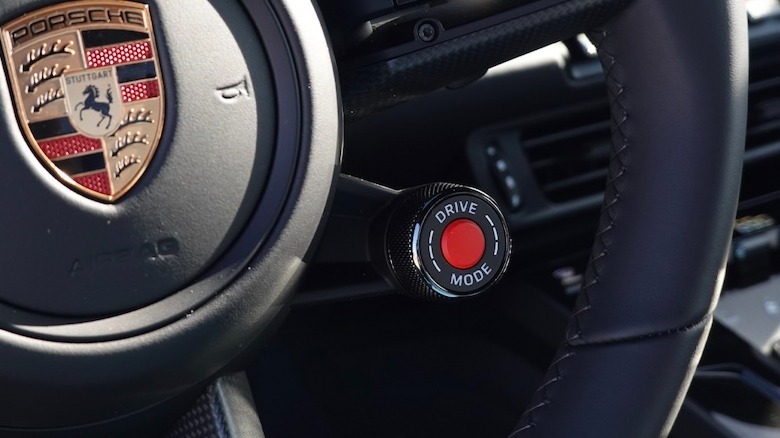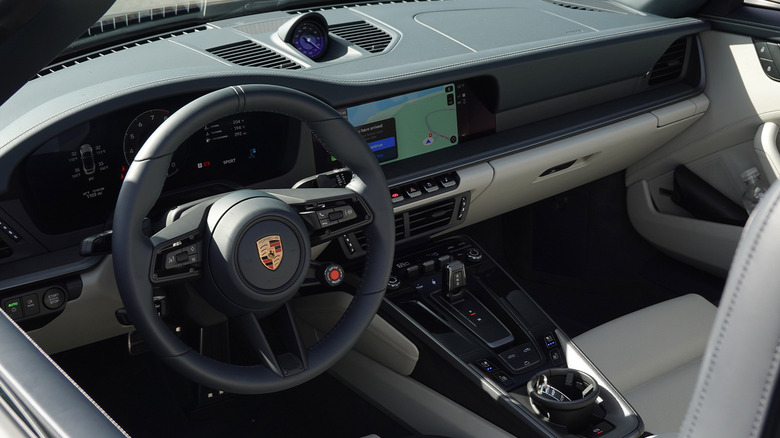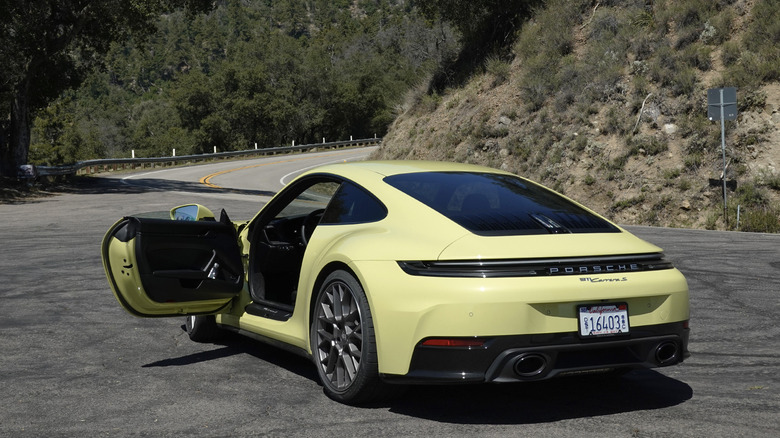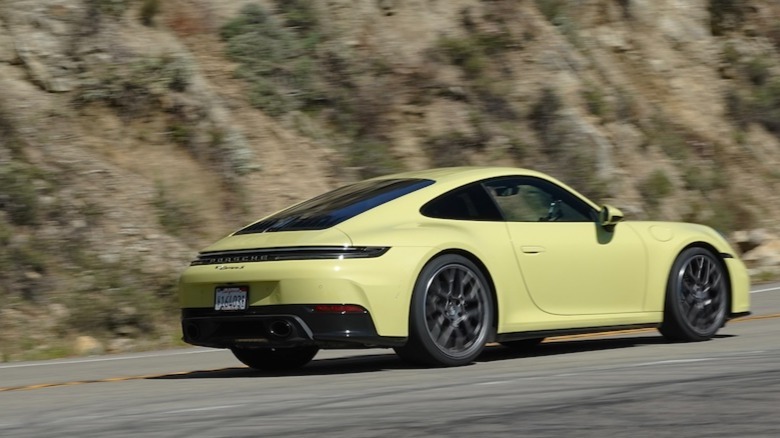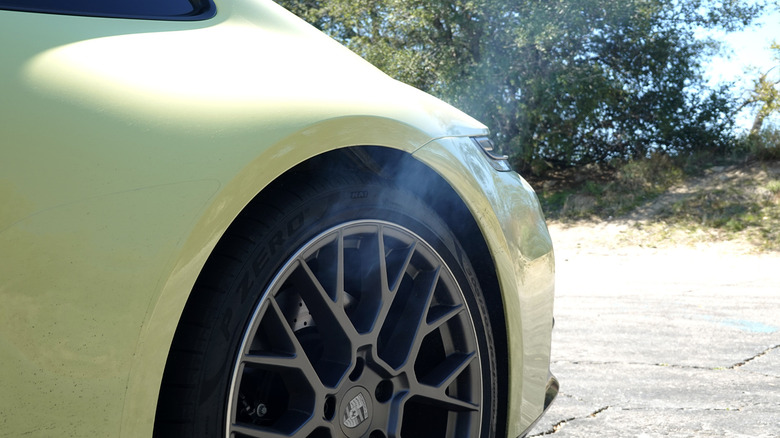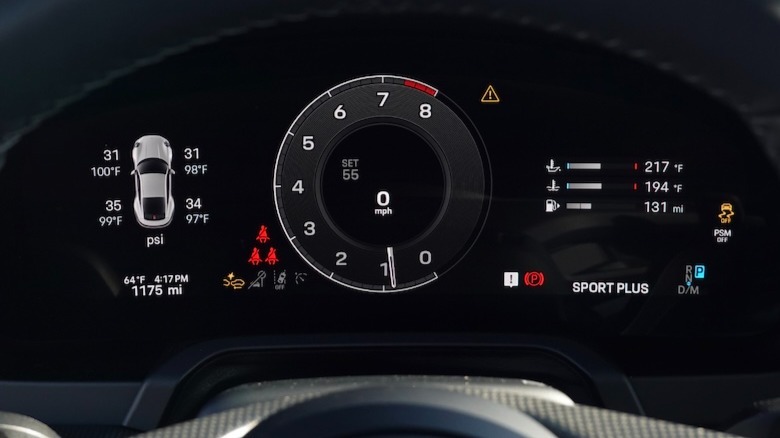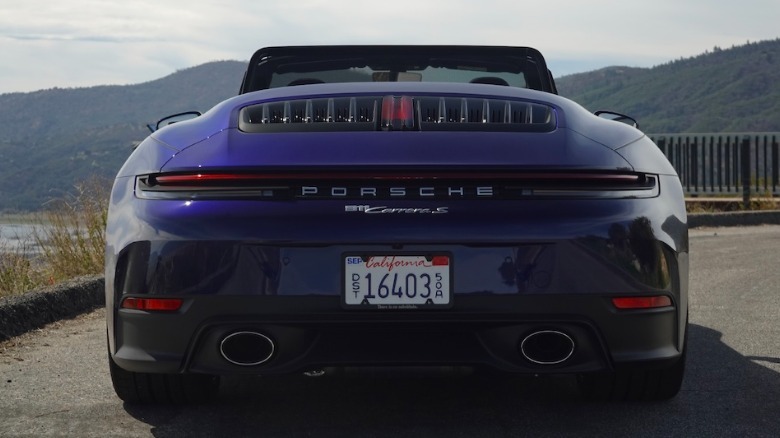2025 Porsche 911 Carrera S First Drive: Manual Purists, Put Away Your Pitchforks
The new 2025 911 Carrera S rightfully inspired an uproar online when Porsche announced in January that, for the first time in the long history of the 911, the sporty "S" variant would not come with a manual transmission option. Instead, the S now joins the base 911 with a PDK gearbox only, leaving the Carrera T as the lone stick-shift model below the more hardcore—and, of course, much more expensive—GT3 tier.
In the spirit of full disclosure, I joined in that outcry. Stunned, disappointed, baffled. Especially given how much the Carrera T overtly proclaims that we need to #savethemanuals. Trying to comprehend, I dove into stats and specs, noting that the 911 S now essentially serves as the GTS since the GTS went T-Hybrid. But the GTS for enthusiasts? Gone.
Yet again, there is no substitute
Then the invite arrived: Why not go test the S in the foothills east of San Diego? Of course, when Porsche comes knocking, everyone says yes—and they know it. Even while preparing intro presentations for what every PR and marketing rep knew represents an absolutely horrific series of executive, engineering, and promotional decisions.
And then I got behind the wheel. Damnation, Porsche, not again. Do we get sick of loving these cars, which truly occupy an entirely unique level of quality from any other manufacturer today? Of course we don't. And the truth I discovered? With an absurd 473 horsepower out of a flat-six displacing just 3.0 liters, the 911 S needs neither a stick shift nor a clutch pedal because we've reached true supercar status. I know, I know. But wait, hear me out...
Carrera T controversy
To fully understand the S, we need to comprehend the entire 911 lineup. Especially the new T, which somehow offers just the "base" engine with 388 horsepower and 331 lb-ft of torque, plus the suspension, brakes, and turbos from higher-spec models. But simply put, the T is just such a good car. So much more playful than the 992 gen's size and weight gains suggest, yet also comfortable and daily drivable, with just enough power to command respect lest that rear-engine weight distribution catch out any untoward shenanigans.
Now the S. Those 473 horsepower and 390 lb-ft mark the biggest delta versus the base (or T!) engine ever, achieved by essentially dropping in the 992.1's GTS engine with the intercooler moved to the top à la the Turbo. So, in many ways, the S now serves as the GTS.
But then again, why no manual for the replacement enthusiast's model? Especially since the S has been the best-selling 911 since the 997 generation which debuted way back in 2004?
Business decisions killed the manual S
Well, part of the decision undoubtedly comes down to take rates. Just 20% of American customers specced a 992.1 S with a stick shift, and just 15% did so for a C4S. Folly, no doubt, among the jetsetters purchasing 911s for vacation homes—or maybe anyone who wants a stick just ponies up for a GT3 (which for historical accuracy, also briefly dropped a manual option for the 991.1 generation).
Luckily, the eight-speed PDK remains the undisputed best automatic transmission ever, which I noticed just pulling away from the ocean in Encinitas. For the 992.2 especially, preventing any previous low-speed shuddering clearly took priority. In normal drive modes, the 'box essentially fades into the background, absolutely serene as shifts become barely noticeable, especially with the exhaust set to the quieter mode.
S is the new GTS
I started out in a 911 S Cabriolet, though, and waited approximately 12 seconds to push a button on the center console for another 12 seconds and lay that top back. Time to crank out some carbon emissions, if just to enjoy the sport exhaust, which now comes standard because apparently 75% of previous 911 S customers selected the option (Porsche listens, guys, see!). Touch a piano key ahead of the gear selector nub, and the S wakes up, delivering plenty of classic flat-six rasp but also a newfound turbo spool whine at low revs that the Carrera T Cab lacked almost entirely.
Liftoff burble and bang, then some wailing up near the higher RPMs, serve as a reminder that the S belongs on the mountain roads ahead, even if cruising in GT comfort belies the more raucous personality this sport exhaust unleashes. Okay, dial the soundtrack back, and focus on more specious details while traffic still ruins the fun.
Smoother but also sportier
But traffic doesn't ruin the fun, because Porsche clearly reached an inflection point for 911 suspension with the 992.2 lineup. The last few gens became stiffer, chassis flex reduced to almost nil, and shock dampers working overload to keep body roll to an absolute minimum, unforgiving in the relentless pursuit of lap times at the expense of compliance and comfort. Not so any longer, as the damper fluid flows more liberally and absorbs bumps, cracks, and tramlines unobtrusively with the shocks set to their loosest valving.
Specifically, Porsche decided not to spec the helper springs from the previous GTS, instead using the hydraulics from that model paired to springs from the 991.2 S. The hardware matches the T, but with calibration for damper valving that takes into consideration the power bump to prevent too much additional squat or nose dive during hard acceleration or braking.
Absolutely rip-roaring pace
Then we escaped the San Diego beachcomber crowd and the roads opened up into the kinds of winding canyons and hilltop spines where Sport and Sport+ and the red overboost button thrive. In the 911's natural habitat, our pace picked up, more boost shove ripping through gears via the immediate, incessant shifts of the PDK.
Now, the suspension absorbed the rough road but also perfectly managed to keep that 911 rear mass bracketed into place, haunches just narrow enough despite the 992's ubiquitous widebody to choose a line. I wondered aloud whether this car came equipped with rear-axle steering, deciding eventually that yes, it must, despite the almost indistinguishable advantage given that the system maxes out at just two degrees while parking.
Approaching legit supercar status
The Sport PASM option adds rear steer, but also features a more direct front steering ratio of 14.1:1 versus 15:1 on cars with standard suspension and no rear steer. And the steering, on the tighter twisties headed up Palomar Mountain, sliding back and forth between sinuous curves, simply bordered on salacious. No way does this S Cab weigh 3,600 pounds—until I stomped on the gas pedal, and the scorching speed through corners gave way to slightly less all-out punch than nearly 500 horsepower should produce.
Still, thanks to the impeccable handling, the S scoots through twists and turns pulling the kind of cornering loads previously reserved for legit mid-engined supercars. All with aplomb, absolutely composed at the edge of sanity, a combined package perfectly buttoned down and eminently capable of everything.
Still not quite as punchy as expected, at least in a straight line
Then I swap into a coupe, which should simply add a hardtop to the same recipe—while shaving almost exactly 185 pounds off the top (pun fully intended). Surely, I figured, a 5% diet cannot make a major difference. And yet, from the jump, the 911 S coupe represents a surprising shift (again with the puns).
Set loose for another lap on the exact same roads, no way can my seat dyno can measure 5% accurately—and yet... The coupe just punches with a bit more pressurized insistence, the steering an additional ounce more precise, communicative, and raw. Scrubbing the front tires, well over onto the shoulder edge of oil Pirelli P Zeros, right foot taking over steering duties well before apex in quintessential 911 fashion, traction and stability control dialed back to almost indistinguishable interventions, then finally turned off entirely because this car, the balance, the confidence, simply needs no electronic assistance to complete the perfect mechanical package.
Coming downhill, then pulling hot into a turnoff to snap some pics, we set the brakes alight, smoking in the blistering sun. Incense on the altar of Porsche perfection, and yet for some reason the pads smelled almost exactly like fried shrimp.
Daydreaming about the perfect 911 S
In more serious terms, though, the difference between coupe and Cabriolet left me stumped. I'm not a convertible guy—never have been, and especially for the 911's classic profile—yet the coupe lacks some of the turbo whine and the finer notes of exhaust symphony. I enjoyed the Cabriolet more than I ever anticipated, the character sparking a more connective haptic synapse between driver and machine than the scalpel nature of the coupe.
I start to daydream, of a coupe on Michelins, or a Cab not in yacht-spec white and blue, even though the Cartegena Yellow Metallic grew on me throughout the course of the day. Trying to keep options minimal, given that the S already includes plenty of standard equipment, should help to keep the price tag as close to the starting sticker of $146,400. The Cab tacks on another $13,200—adding many more options starts to approach GTS T-Hybrid territory, or even GT3 where a stick shift comes standard. Though of course, however the Trump tariff situation concludes will dictate plenty of Porsche demand throughout an unknown period of future 911 S shopping.
2025 Porsche 911 Carrera S Verdict
But then we return to the true dream spec question: does this car need a manual? And in fact, on an engineering call about two weeks later, Porsche reps start to waffle. Apparently the strong response to dropping a stick shift for the 911 S came as a surprise (yeah, right) and remember, Porsche does listen.
Don't believe the hype. First of all, the T exists and absolutely rocks the perfect level of performance for a three-pedal car. Plus, that marketing push of "the only Carrera with a stick shift" went hard enough that buyers might get peeved should a 911 S then arrive later and rewrite the narrative. But also, if the 992.2 S has one flaw, it's that the GTS-turned-S power delivery lacks some of the thrill of the T's less prodigious flat-six. Even Porsche's dyno sheet shows the S engine's torque curve as an entirely flat line from 2,250 to past 6,000 RPM. The turbos punch out plenty of shove, but lack the swelling sensation of boost that the less potent T dispatches in spades.
That's all tuning, of course, but the T's rev range makes for perfect playfulness with a manual. Stick around the top few thousand revs and the engine feels almost naturally aspirated. Or purposefully short shift and let the pressure build. PDK, on the other hand, pairs perfectly with the more formidable disposition of the GTS 3.0-liter's tuning. The 911 S is just so damned fast now that screaming up through each gear by hand would require too many shifts too quickly, whether in town or on the freeway or carving up a backbone ridge. Turns out that S now stands for scalpel or supercar, not Sport—or more accurately, Super—as the Porschephiles previously thought.
